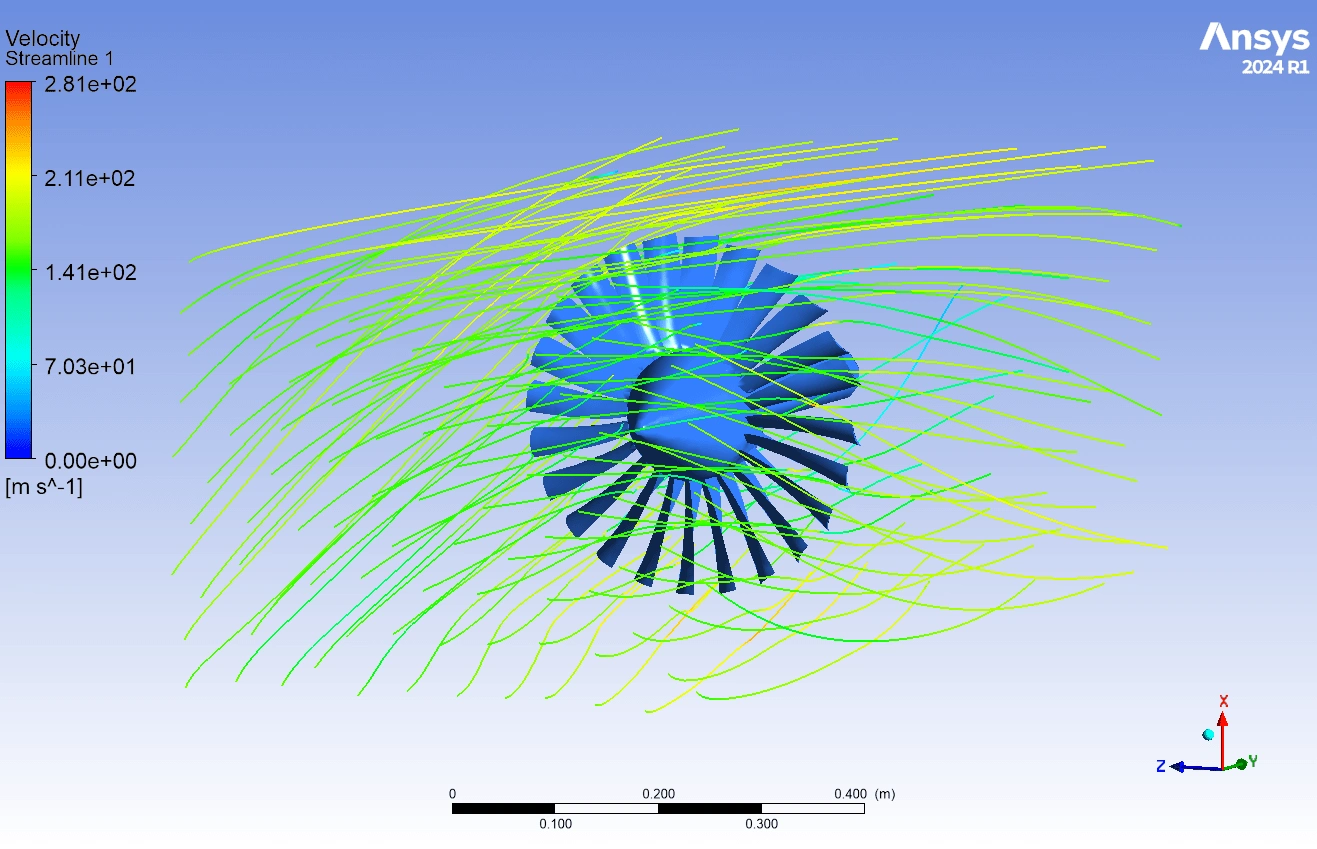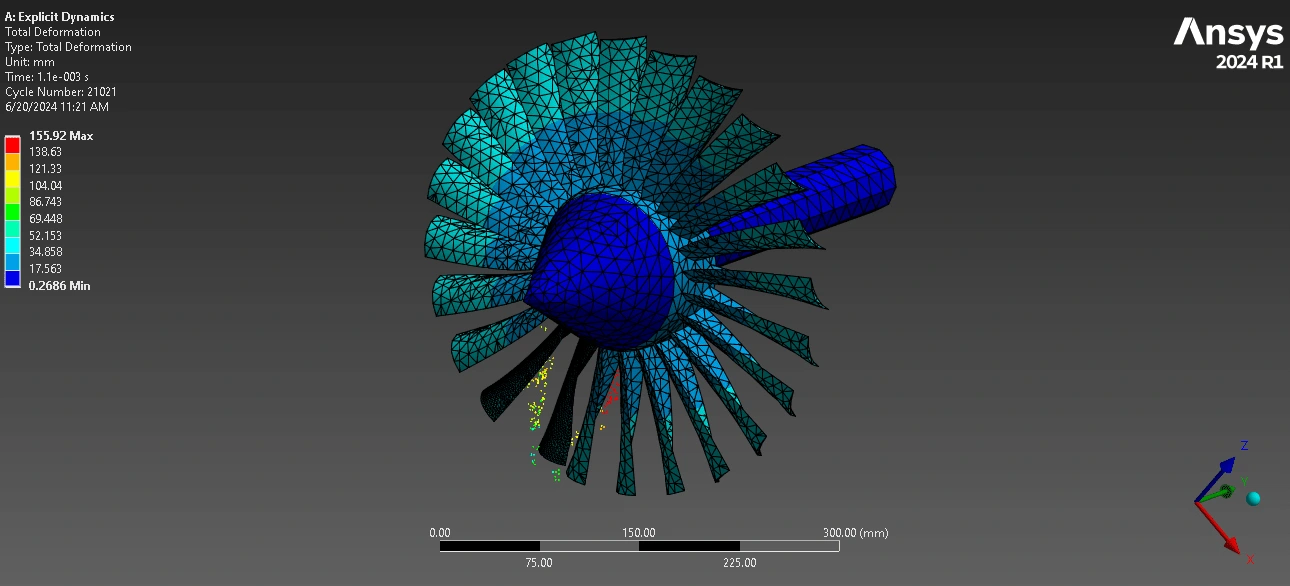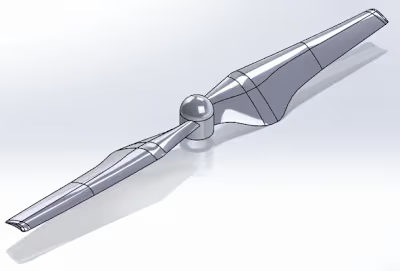Fluid Flow Analysis over a Turbo Fan post-bird-strike
CFD Analysis of an Aircraft Induction System with Impact of a Bird

As part of a research project, a fluid flow analysis was performed over a deformed Turbo Fan from a Roll-Royce Trent engine. The work was done from scratch i.e. the design was first made in SolidWorks and imported into ANSYS's "Explicit Dynamics" module and the bird strike was simulated. The resultant deformed body is shown below.

Deformed body due to bird impact
The material for the fan blade was chosen to be Titanium with properties similar to those of the actual turbofan blades. For meshing, face sizing was done for the blades. Near the bird, the size of the mesh particles was set to 3 mm. Elsewhere, the size was set to be 5 mm. Bird meshing was done using particle reference and method. The sizes can be seen in the mesh (figure 2).
The initial conditions were set as the angular velocity of the blades and the linear velocity of the bird. The angular velocity was set to be 2550 RPM which is typical of a turbofan at takeoff and landing speed. The linear velocity for the bird was set to be 150 m/s.
The solver used was AutoDyn which is native to explicit dynamics. The solution at this point gave us the deformed geometry which was then exported to a .stl file and converted to a step file using DS SolidWorks.
The converted deformed geometry was imported into fluent geometry. Here the first step was to create an enclosure and name selections which was done using DesignModeler.
Meshing was done keeping the element size of 10 mm for both the enclosure as well as the fan. This concluded the meshing part.
For setup conditions, rotational velocity was set in cell zone conditions, and the boundary conditions were set as follows,
• Inlet velocity: 150 m/s
• Blade’s rotational velocity: 200 rad/s
The model used was SST-k omega with the energy equation turned off. The report definition for calculating the thrust force was set and the solution was initialized using hybrid initialization. The solution was carried out at 150 iterations which provided satisfactory results. Afterward, the results were found in the fluent post-analysis component.
The same procedure was carried out for the undeformed geometry and the results were compared.
Like this project
Posted Jul 4, 2024
Fluid flow analysis and flow visualization over a Turbofan engine typically found in a passenger aircraft.
Likes
0
Views
16






